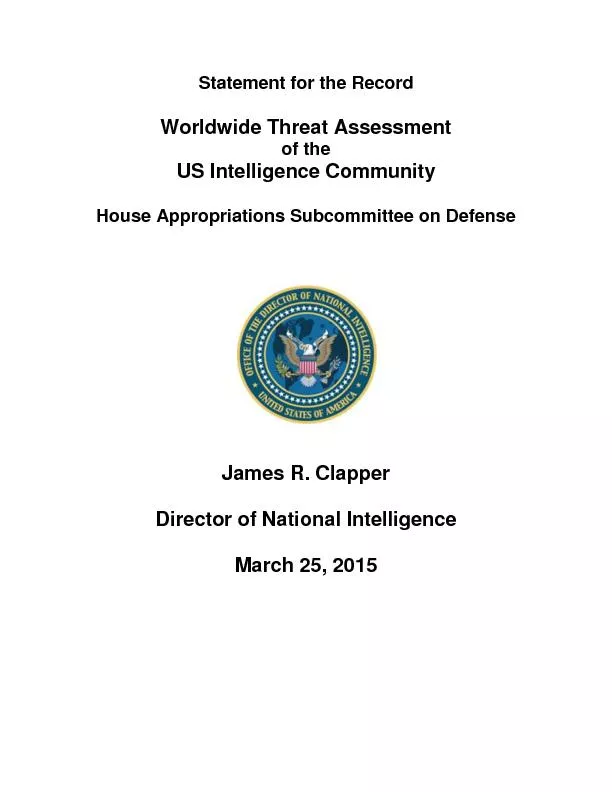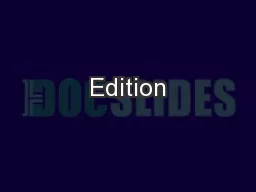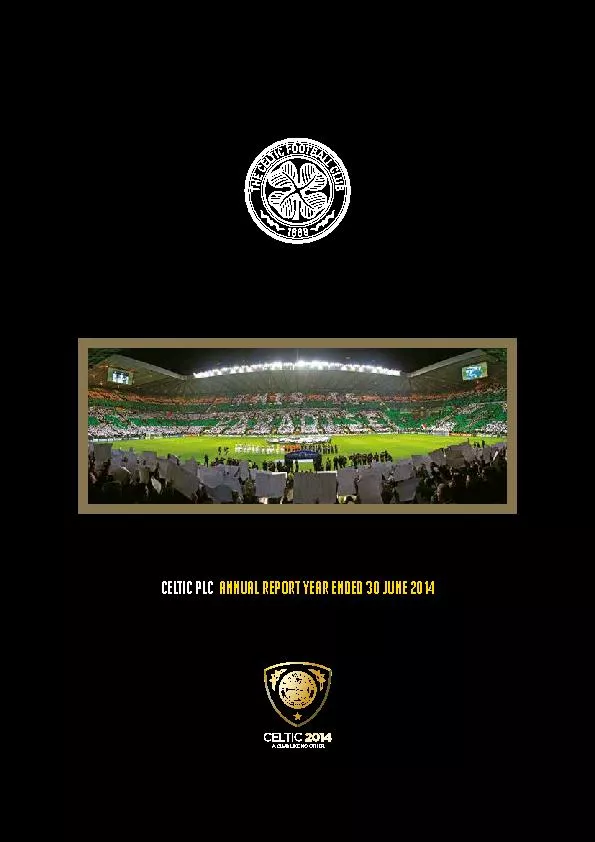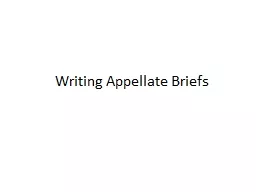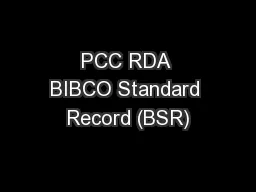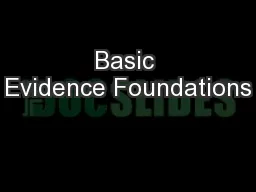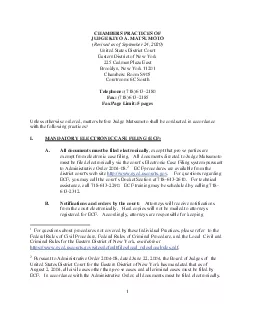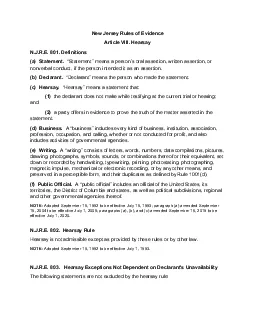PDF-Statement for the Record
Author : phoebe-click | Published Date : 2016-05-06
Worldwide Threat Assessment of the US Intelligence Community House Appropriations Subcommittee on Defense James R Clapper Director of National Intelligence March
Presentation Embed Code
Download Presentation
Download Presentation The PPT/PDF document "Statement for the Record" is the property of its rightful owner. Permission is granted to download and print the materials on this website for personal, non-commercial use only, and to display it on your personal computer provided you do not modify the materials and that you retain all copyright notices contained in the materials. By downloading content from our website, you accept the terms of this agreement.
Statement for the Record: Transcript
Download Document
Here is the link to download the presentation.
"Statement for the Record"The content belongs to its owner. You may download and print it for personal use, without modification, and keep all copyright notices. By downloading, you agree to these terms.
Related Documents

